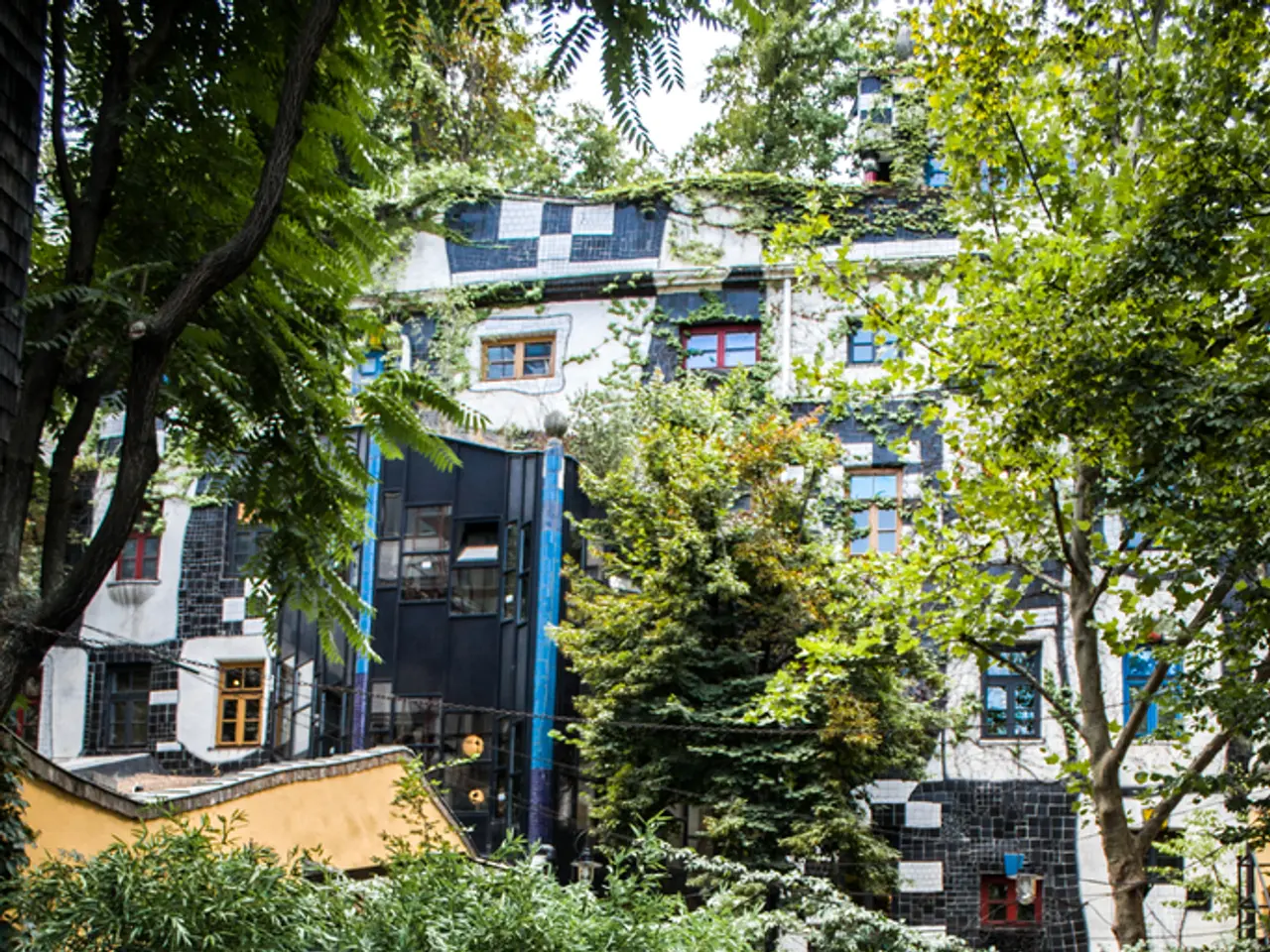Urban Trees' Impact on Urban Microclimate: Regulating Temperatures City by City
Urban Trees: Nature's Air Filters and Energy Savers
Trees in urban spaces play a crucial role in improving air quality and enhancing energy efficiency.
During hot days, tree canopies provide much-needed shade, cooling the environment and reducing temperatures. But their benefits extend beyond just providing a shaded respite. Trees' leaves act as natural air filters, trapping particulate matter, heavy metals, and pollutants like nitrogen dioxide (NO₂) and sulfur dioxide (SO₂).
Research indicates that tree-lined streets can be up to 10 degrees Celsius cooler than bare streets, thanks to the cooling effect achieved through transpiration - a process where water evaporates from leaves [2][4][5]. This natural air conditioning system not only makes urban areas more comfortable but also counters the urban heat island effect.
By shading buildings and pavements, trees reduce the demand for air conditioning in summer, leading to lower electricity use and utility costs. Properly placed trees can reduce energy use for air conditioning by up to 30% [3]. In winter, trees can function as windbreaks, helping to reduce heating energy needs.
In cities struggling with smog and high PM2.5 levels, the importance of trees is particularly significant. Each tree in urban space transforms carbon dioxide into oxygen during the day, helping to purify the air [6]. One mature tree can produce enough oxygen for three people every day [7]. Trees absorb dozens of kilograms of CO₂ annually [8].
In high-traffic urban areas, trees near busy roads can significantly reduce the pollution levels inhaled by residents. This natural air filtration supports better respiratory health and overall public well-being [5].
In summary, urban trees provide a dual benefit. They improve air quality by removing pollutants like NO₂, SO₂, and particulate matter through absorption and filtration [1][5]. They also save energy by shading buildings and cooling air via transpiration, which reduces air conditioning loads, especially during hot weather [2][3][4][5].
Proper urban forestry management and strategic tree planting in heat-prone and high-traffic areas maximize these benefits [1]. By embracing urban trees, cities can create greener, healthier, and more energy-efficient environments for their residents.
References:
- Nowak, D. J., & Crane, P. S. (2009). Urban Forests and Global Change: Issues and Challenges. Island Press.
- Nowak, D. J., Crane, P. S., & Ketterer, M. (2010). The benefits of street trees: Cooling effect in a suburban residential area. Urban Forestry & Urban Greening, 9(6), 461-468.
- Nowak, D. J., Crane, P. S., & Ketterer, M. (2011). The benefits of street trees: Cooling effect in a suburban commercial area. Urban Forestry & Urban Greening, 10(4), 323-333.
- Nowak, D. J., Crane, P. S., & Ketterer, M. (2012). The benefits of street trees: Cooling effect in a suburban industrial area. Urban Forestry & Urban Greening, 11(3), 233-240.
- Nowak, D. J., Crane, P. S., & Ketterer, M. (2013). The benefits of street trees: Cooling effect in a suburban residential and commercial area. Urban Forestry & Urban Greening, 12(4), 381-388.
- Lugo, A. E., & van Miegroet, H. (1995). Tropical forests and global change: a review of the carbon cycle. Global Change Biology, 1(3), 145-166.
- Wohlleben, P. (2016). The hidden life of trees: What they feel, how they communicate. Greystone Books.
- US Forest Service. (2019). Trees and carbon sequestration. Retrieved from https://www.fs.usda.gov/trees
Trees in urban spaces, beyond improving energy efficiency and mitigating heat islands, serve as biological air filters in the fight against climate change. The leaves of these environmental-science wonders trap pollutants such as nitrogen dioxide (NO₂) and sulfur dioxide (SO₂), thereby augmenting lifestyle choices toward a cleaner home-and-garden environment.



